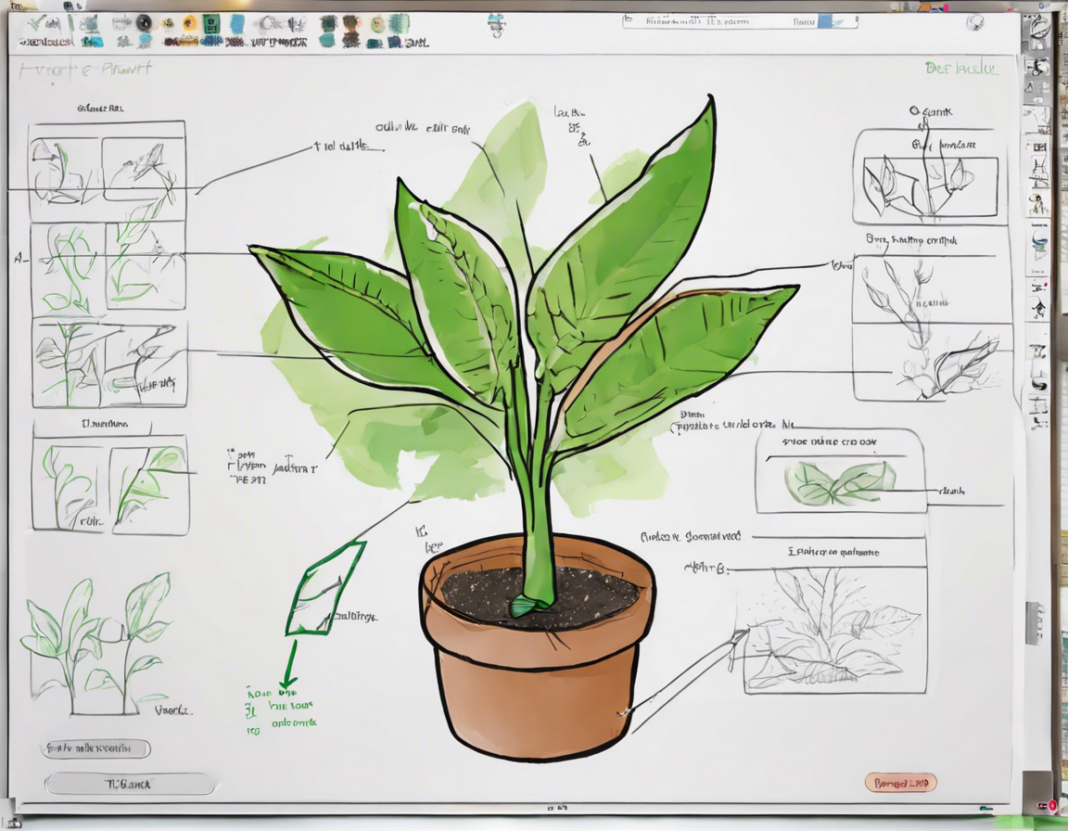Plants are essential to life on Earth. They provide us with oxygen, food, medicine, and materials for shelter and clothing. Understanding the different parts of a plant is crucial for anyone studying botany or simply interested in the natural world. Drawing and labeling a plant’s parts can help you further comprehend their functions and relationships within the organism. In this blog post, we will guide you through the process of drawing and labeling the parts of a plant, from the roots to the flowers.
Roots
The roots are the underground part of the plant responsible for anchoring it to the ground and absorbing water and nutrients. When drawing the roots, depict them spreading outwards and downwards from the base of the plant. Label them clearly as “roots.”
Root Parts:
- Primary Root: The main root that grows downwards.
- Secondary Roots: Smaller roots that branch off from the primary root.
- Root Hairs: Tiny extensions of the roots that increase surface area for better absorption.
Stem
The stem is the central part of the plant that supports the leaves, flowers, and fruits. Draw a straight or curved line extending from the roots upwards to represent the stem. Label it as “stem.”
Stem Parts:
- Node: The point on the stem where leaves are attached.
- Internode: The space between two nodes.
- Apical Bud: The bud located at the tip of the stem responsible for upward growth.
Leaves
Leaves are the primary sites of photosynthesis in plants. They capture sunlight and convert it into energy for the plant. Draw oval or elongated shapes branching off from the stem to represent leaves. Label them as “leaves.”
Leaf Parts:
- Blade: The broad, flat part of the leaf.
- Veins: Vascular bundles that transport water and nutrients.
- Petiole: The stalk that attaches the leaf to the stem.
Flowers
Flowers are the reproductive organs of the plant, responsible for producing seeds and fruits. Draw colorful, intricate shapes at the tip of the stem to represent flowers. Label them as “flowers.”
Flower Parts:
- Petal: Colored, often scented parts that attract pollinators.
- Sepal: Green, leaf-like structures at the base of the flower.
- Pistil: The female reproductive part of the flower.
- Stamen: The male reproductive part of the flower.
Fruits
Fruits develop from the ovary of a flower and protect seeds while aiding in their dispersal. Draw varied shapes and sizes near the flowers to represent fruits. Label them as “fruits.”
Fruit Types:
- Simple Fruit: Develops from a single ovary.
- Aggregate Fruit: Develops from multiple ovaries in a single flower.
- Multiple Fruit: Develops from the ovaries of multiple flowers.
Frequently Asked Questions (FAQs)
Q1: Why is it important to learn about the parts of a plant?
A1: Understanding the parts of a plant helps us appreciate their biology, functions, and ecological roles. It also aids in plant identification and cultivation.
Q2: How can drawing and labeling a plant’s parts enhance learning?
A2: Drawing and labeling involve visual and kinesthetic learning, reinforcing memory and comprehension of the plant’s anatomy.
Q3: What tools are required for drawing and labeling a plant’s parts?
A3: You can use pencils, erasers, colored markers, and a labeled diagram as a reference when drawing and labeling a plant’s parts.
Q4: Can I learn about plant parts online?
A4: Yes, there are various online resources, tutorials, and apps dedicated to teaching plant anatomy through interactive diagrams and quizzes.
Q5: How do plant parts vary among different species?
A5: While the basic plant parts remain consistent, their sizes, shapes, and functions can vary across different plant species depending on their adaptations and evolutionary history.

